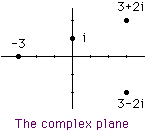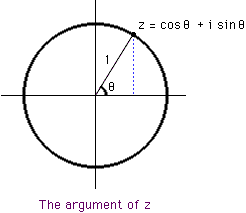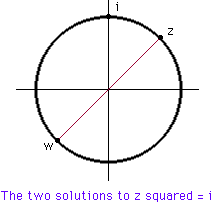I would like to know what is the square root of i , and i squared? I am looking for a response appropriate for secondary level students.
Thank you,
Wayne
Hi Wayne
The answer to your second question is straightforward since i is, by definition, one of the two numbers satisfying i squared is -1, the other is -i. Thus the answer to your second question is that i squared is -1. The first question requires more work but should be appropriate for secondary level students if they know some trigonometry.

and
then,expanding as you normally would, using the fact that i squared is -1 and using the double angle expressions for sine and cosine, gives

Hence

- First check, using this method, that i squared is -1. The complex number i has argument 90 degrees and hence i.i has argument 90 + 90 = 180 degrees. Hence i squared = cos(180 deg) + i sin(180 deg) = -1.
- For your first question you want z.z=i. Since the modulus of i is 90 degrees taking z with modulus 45 degrees will work, Hence
z = cos(45 deg) + i sin(45 deg) and thus

There is, however, another possible choice for z, and that is with modulus 225 degrees, since doubling this angle also brings you around to i. Thus a second solution to i squared = -1 is then
w=cos(225 deg) + i sin(225 deg) and thus

You can check both solutions by calculating z times z and w times w.
Harley
